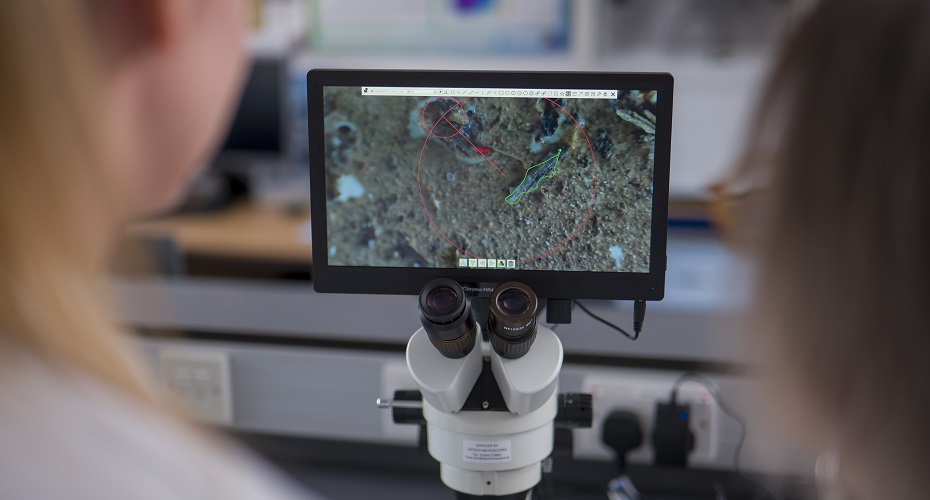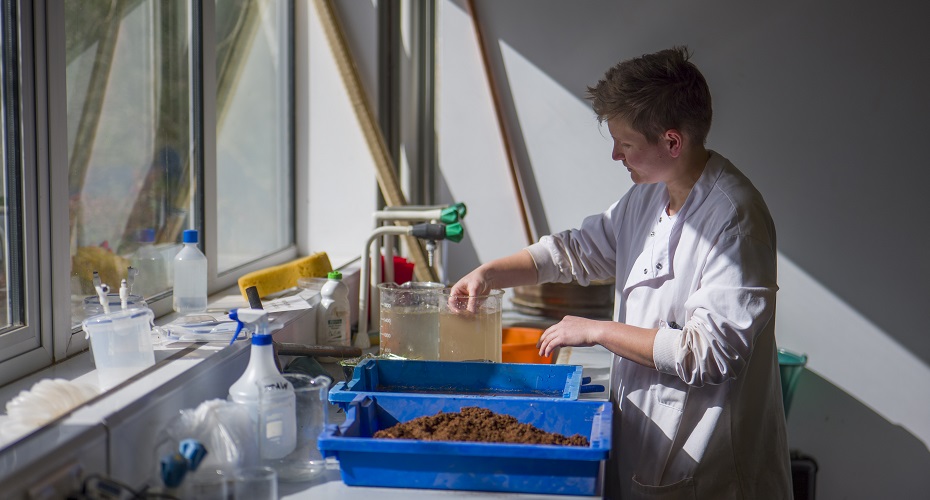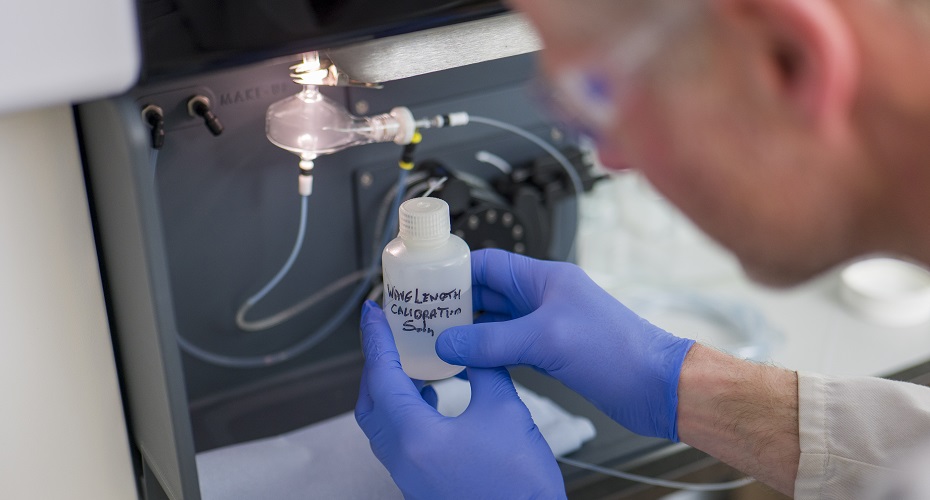Facilities
CO2 Exchange Laboratory
Location: Laboratory D395, Amory Building, Streatham Campus
This laboratory is able to have the ambient temperature and CO2 levels controlled within set parameters. It is used to conduct experiments were there is a requirement for constant temperature and CO2 levels, e.g. plant growth experiments. There are also a number of incubators which enable plant/soil respiration experiments to be conducted.
Physical Processing Laboratories
Location: Laboratories D274 & D394, Amory Building, Streatham Campus
The equipment in these laboratories allows physical processing and preparation of soil, sediment and plant samples prior to further analysis. Laboratory D274 is equipped with three dust extraction hoods, conventional ovens, freeze dryers, grinding and sieving equipment, while laboratory D394 is equipped with two fume hoods, large amounts of bench space, cutting and viewing equipment and an autoclave.
Radiometry Laboratory
Location: Laboratory D392, Amory Building, Streatham Campus
This laboratory houses a range of HPGe gamma spectrometers and alpha spectrometers that are used for analysing environmental radionuclides in soil, sediment and water samples. This equipment primarily supports research involving the use of fallout radionuclides (e.g. Cs-137 & Pb-210) to date sediment deposits (e.g. floodplain, lake cores and peatlands) and trace sediment movement. It includes:
- P- and N- type HPGe coaxial gamma detectors
- HPGe well gamma detectors
- A field portable HPGe gamma detector
- A suite of alpha detectors
Environmental Laboratory
Location: Laboratory C362, Amory Building, Streatham Campus
This lab contains specialist microscopes for paleontology and oceanography work.
Microscopy Laboratories
Locations: Laboratory C363, Amory Building, Streatham Campus
These laboratories have recently benefitted from investment and contain high specification binocular and optical microscopy facilities, imaging and auto-analysis equipment. Examples of its use include enabling the study of pollens within the context of climate change and population expansion and migration; micro-organisms and invetebrates for water quality investigations; or microplastics and spherical carbonaceous particles in pollution studies.
Analytical Processing Laboratory
Location: Laboratory D435, Amory Building, Streatham Campus
In this laboratory chemical processing of samples takes place prior to being analysed on the specialist pieces of equipment in the analytical instrument, radiometry or microscopy laboratories.
Analytical Instrument Laboratory
Location: Laboratory D432, Amory Building, Streatham Campus
The analytical instrument laboratory contains a variety of equipment with the following capabilities:
- The analysis of soil/sediments/plants/waters either for single specific heavy metals/nutrients (ppm levels) or whole suites of chemical elements (ppb levels).
- The analysis of water quality including nitrates, phosphates, sulphates and carbonate in liquid form.
- The analysis of soils, sediments and plants for elemental carbon and nitrogen content.
- The analysis of soils and sediments for their particle size contents.
Clean Laboratory
Location: Laboratory D430, Amory Building, Streatham Campus
This laboratory is a clean facility. It is used to prepare marine and terrestrial samples for pollen and spherical carbonaceous particles contents. These can be subsequently used for age dating, climate determinations and population expansion and migration. Current material spans both northern and southern hemisphere regions, particularly South America.
Balance Laboratory
Location: Laboratory D428, Amory Building, Streatham Campus.
This laboratory houses a number of 2 decimal and 4 decimal place balances. It also contains 2 micro balances used for weighing out elemental analyser and isotopes samples.
Experimental Laboratory
Location: Laboratory D395a (Experimental Hall), Amory Building, Streatham Campus
The experimental area is used to imitate and interpret natural processes involving water. There is the capability to simulate braided stream environments, alluvial fan environments and a plot which can be used in conjunction with the overhead rainfall simulator system to mimic water runoff environments. For each system there is the scope to alter sediment load, water volume and rock bed slope angle.
Experimental Palaeo Fire Laboratory
Location: Laboratory B6, Hatherly Building, Streatham Campus.
This European Union ERC funded laboratory is a specifically designed experimental PalaeoFire Laboratory that enables the flammability of natural fuels to be tested. It comprises state of the art flammability testing apparatus as well as general palaeontological preparation areas.
Sample Storage Areas
Locations: Rooms D276, D276 cold store, D390 cold store
These facilities allow the storage of a wide variety of samples. They can be kept in conditions that will best preserve them for the analyses they will undergo, enabling the samples to remain fresh and in good condition.
Paleogeography Laboratory
Location: Laboratory C361, Amory Building, Streatham Campus
Processing and analysing different types of soil/plant/peat samples.







